Bands offer beginners and experienced lifters alike a new and unique way to train. This post shares the unique benefits and drawbacks of doing resistance band workouts. This will help you to decide whether or not to include them in your own fitness program.
The main advantages of resistance bands include; cost-effectiveness, convenience, capability to work all muscles, and linear variable tension. The main disadvantages are low durability and inaccurate progression tracking.
I’ve been using mainly barbells, dumbbells, and machines for much of my lifting career. But the 2021 lockdowns forced me to find a cheap and effective alternative to train at home. There are many things I like about them. But there are also unique properties that I dislike.

11 Benefits Of Using Resistance Bands
1) Ability To Work All Muscles In The Body
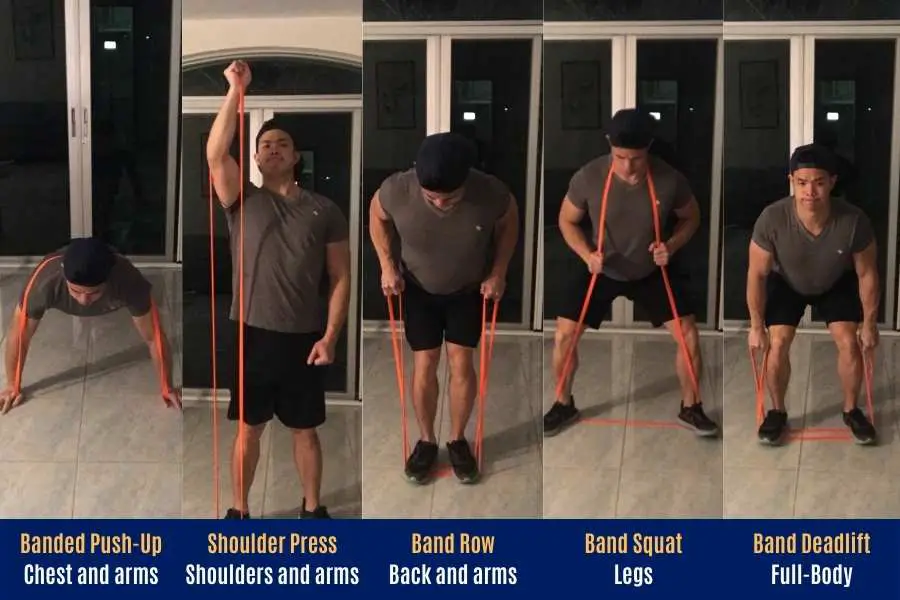
In my opinion, one of the most underrated benefits of a resistance band is the fact that they can effectively work ALL of the muscles in your body. Don’t let their simple design fool you the way they fooled me as a beginner.
Resistance band workouts can be used just as effectively as a free weight session. By anchoring it at different angles and looping them around different body parts, you can effectively train every muscle group.
Additionally, many of the most popular free weight movements can be replicated using resistance bands. For example, the 5 main compound lifts– squats, deadlifts, chest press, shoulder press, and row- alone can be performed with a band to work the full-bodyl.
Take-home message- bands are a convenient way to train your muscles when free weights and machines aren’t an option!
2) Effectively Build Muscle, Burn Fat, & Tone
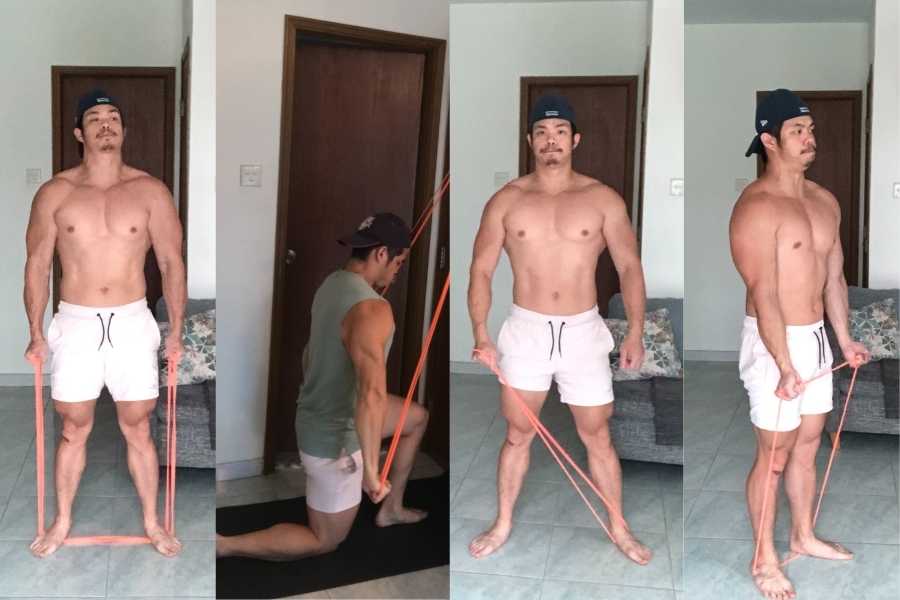
Bands can be used to achieve all training goals. And this versatility is one of its greatest benefits for beginners to advanced lifters alike.
I’m a casual bodybuilder and I’ve successfully used bands to:
- Build muscle.
- Increase strength.
- Get ripped.
- Tone muscle.
They can also be used perform HIIT-style cardio workouts and lose fat. You can check out my other article for example body transformations that other people have achieved using their resistance bands.
Take-home message- exercise bands are a great bit of kit for getting in shape!
3) Bands Produce A Unique Tension Profile

It can be easy to doubt the effectiveness of what is essentially a giant elastic band. But they produce a property called linear variable resistance (LVT), meaning tension increases as the band stretches longer.
Studies show that LVT is a great way to build strength and power in the upper range of a movement. For example, this 2019 meta-analysis concluded that resistance band training promoted just as much full-body muscle and strength gains as dumbbells and weight machines do in a group of men and women.
However, it’s essential to get yourself a set of heavy bands if your primary goal is to gain muscle and strength.
Take-home message- LVT offered by bands can help you to build muscle as effectively as free weights can!
4) Superior Convenience Compared To Weight Lifting
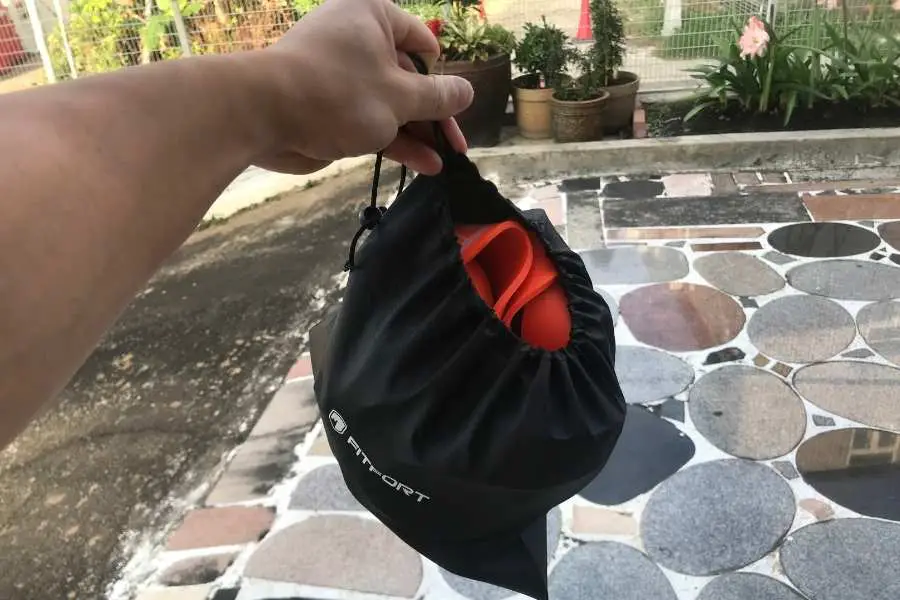
Weights are a popular and effective way to train. But they aren’t very convenient, especially for beginners who may not want to pay for gym membership or expensive home equipment.
Here are some of the unique features that make a resistance band convenient to use:
- Extremely portable. They can be used in the living room or stuffed into a backpack for a beach or park workout.
- Easy to handle. They’re small, flexible, and safe when dropped.
- Can be stored anywhere. You don’t need dedicated storage space for bands like you would for free weights. They can be crammed into even the smallest of drawers.
- Extremely lightweight. This means they’re safe and easy to transport.
Take-home message- bands are equally convenient to use for daily workouts or for the spontaneous 15-minute fat-blaster
5) Bands Are Extremely Cheap
Realistically, most people cannot afford the fanciest membership or simply don’t feel like it’s worth the money. Well, resistance bands are the cheapest source of external resistance you can buy:
| Resistance Training Equipment | Typical Cost For A Full Home Set-Up |
|---|---|
| Resistance band set | $50 |
| Adjustable dumbbells | $500 |
| Kettlebell set | $400 |
| Fixed-weight hex dumbbell set | $1000 |
| Barbell and rack | $1000+ |
You can see that resistance bands are 10x more affordable than adjustable dumbbells and kettlebells (two other popular home gym items). The former offers the lowest cost per lb of resistance, compared to the latter two.
Take-home message- a set of high-quality bands is a great investment if you don’t want to pay hundreds for home weights.
6) Great For TUT-Style Training To Tone Muscles
Remember when I talked about LVT in point 3). Well, LVT complements time-under-tension training (TUT) to tone your muscles.
TUT sounds fancy but it’s not. Simply reduce the tempo on your selected lift. For example, where a normal banded curl would take ~3 seconds to complete a rep, a TUT banded curl would be prolonged to ~5 seconds. This is one of my favorite ways to get a good muscle pump. And this in turn is awesome for defining specific target muscles.
Here are my favorite resistance band movements to add definition and tone to popular muscles:
| Body Part | Recommended Resistance Exercise |
|---|---|
| Biceps | Bicep curl using a resistance band |
| Triceps | Tricep pull-down using a door-anchored band |
| Chest | Banded chest fly |
| Shoulders | Lateral raise using resistance bands |
| Lats and back | Rows and reverse flyes |
| Glutes | Stiff-legged deadlift and banded leg kickbacks |
| Legs | Banded squats and lunges |
Take-home message- the natural tension profile of bands make them great building a toned and defined body!
7) Most Band Movements Also Work The Core
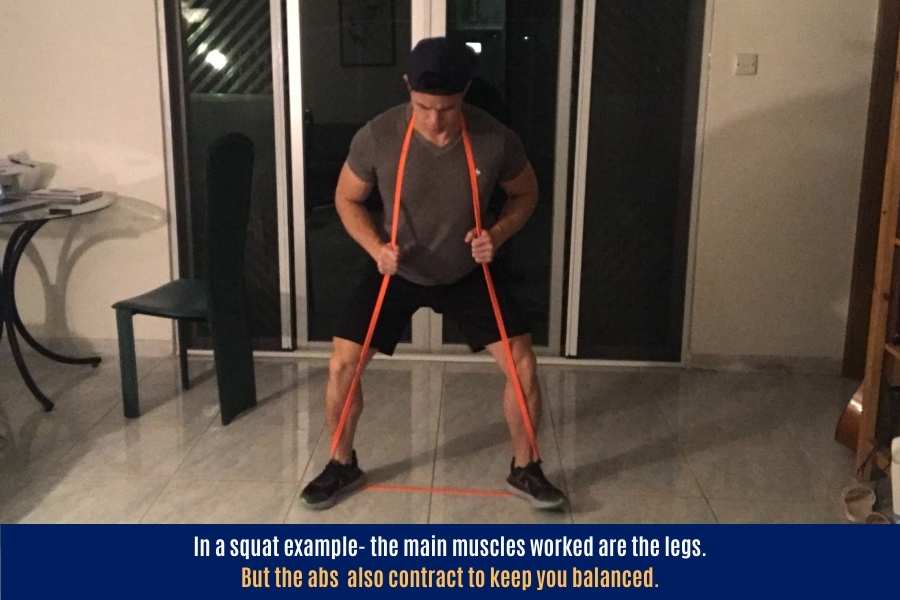
Your core describes the central torso area where your 6-pack abs are located (or hidden!). And one of the great benefits of resistance band exercises is that most of them will work the core to some degree, on top of the target muscle the exercise was intended to work.
If you’ve ever performed a band exercise, then you’ll know that they are unstable. But this can be an advantage because the extra effort is required to keep your balance and form as you push/pull on a band. And in most cases, you need to brace your abs to maintain good form.
Try doing a banded squat for example- you can feel just how hard your abs need to engage in order to keep your back straight.
Take-home message- band training can help you build a stronger core without even performing specific ab exercises!
8) Resistance Bands Improve Strength & Power Output
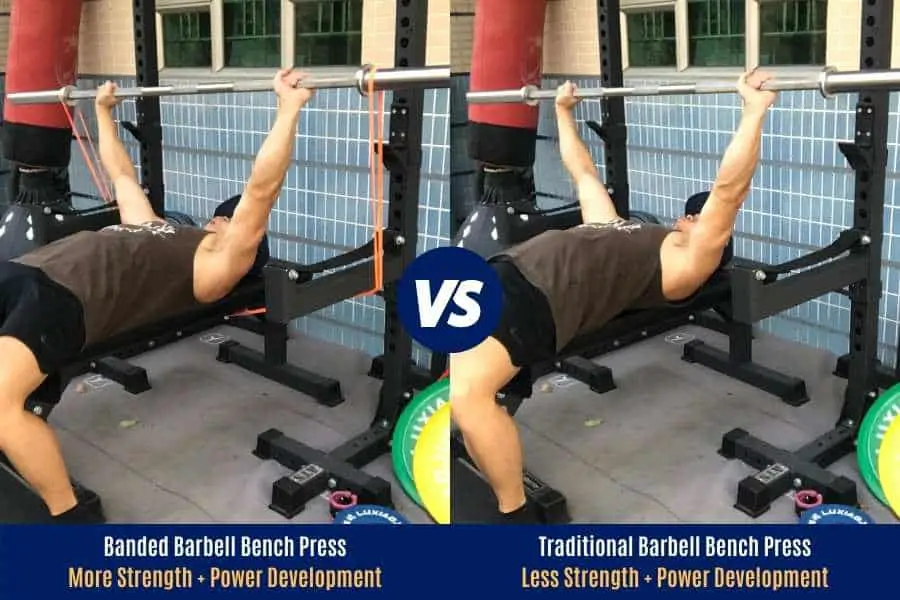
Bands are excellent for strength and power training. In fact, this 2016 study found them to be just as good as weights for improving strength. Whatsmore, the authors also concluded that combining free weights with bands resulted in the largest strength gains.
They compared bench press power output in two groups of rugby players:
- Group 1- trained with a barbell bench press only.
- Group 2- trained with a barbell + band bench press.
That’s because attaching a resistance band to a barbell makes the movement harder at the top (as elasticity increases). This portion of the bench press movement would actually be the easiest part of the motion had a band not been attached.
I like to use this unique benefit to help me break through strength plateaus.
Take-home message- adding a band component to your weight training benefits your overall strength and power development!
9) Training Angles Can Target Specific Muscles Regions

Adding variation to your exercises by altering the angle is important for hitting all regions of a target muscle. For example, the incline press allows you to isolate the upper pecs and the incline bicep curl allows for better biceps stretch and activation.
Angles are usually achieved using a bench. But this is bulky, expensive, and unsuitable for most home applications. One of the great benefits of using a resistance band is they allow you to work in different angles cheaply and effectively. All you need is a door anchor.
Simply attach the anchor to the bottom of a door to generate an incline angle or the top of a door for a decline angle. No bench is needed.
Take-home message- bands are a cheap and effective way to emphasize different muscles using a variety of angles.
10) Improve Squat Performance Using Bands
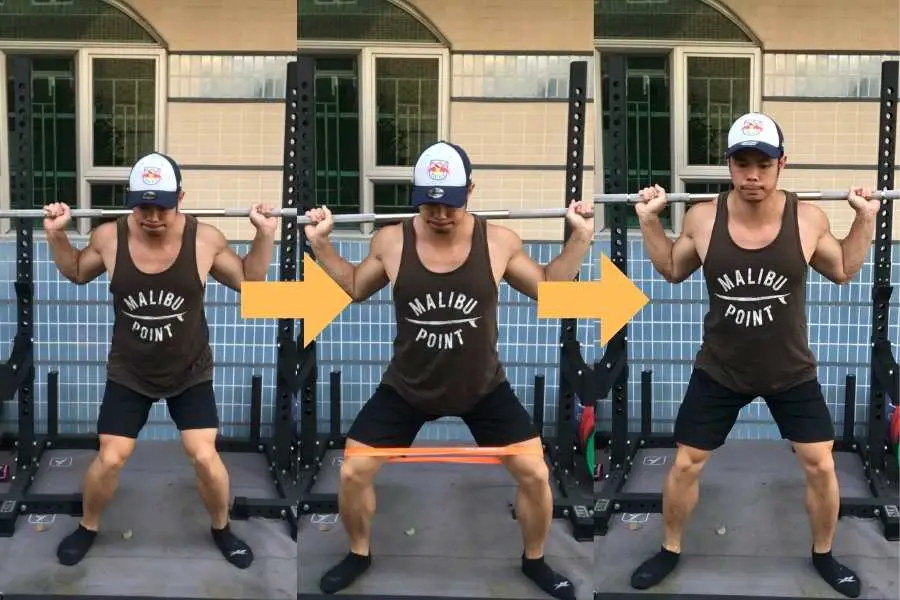
Squats are one of the best exercises to build powerful legs and a shapely butt. However, beginners often experience an inward caving of the knees during the squat. And this limits the weight being lifted which may limit the results obtained from the squat.
A great benefit of doing squats with a resistance band looped around the legs is they force you to push your knees outward. And once you’ve become accustomed to this, you will learn to push your knees out even when the bands aren’t there!
This can help you to perform heavier squats, build more powerful legs, and increase glutes’ definition!
Take-home message- bands can complement free weights to increase squat performance in beginners.
11) Increased Mind-Muscle Contractions
A mind-to-muscle contraction describes the conscious and deliberate contraction of a muscle during a movement. It’s a core component for maximizing muscle strength and power generation.
Beginners often lack a good mind-muscle connection. For example, they swing their dumbbells aimlessly up and down as well as cheat on their lifts. Consequently, muscle activation is reduced and training benefits are also diminished.
Band training can help you develop better mind-muscle contractions due to their unique resistance profile. As the band stretches, it becomes progressively harder to push/pull against it. As a result, your mind has to focus increasingly more on pushing/pulling the band.
Take-home message- use bands to increase your mind-muscle contractions, build more muscle, and burn more calories!
6 Drawbacks Of Using Resistance Bands
1) Difficult To Load Bands With Heavy Resistance
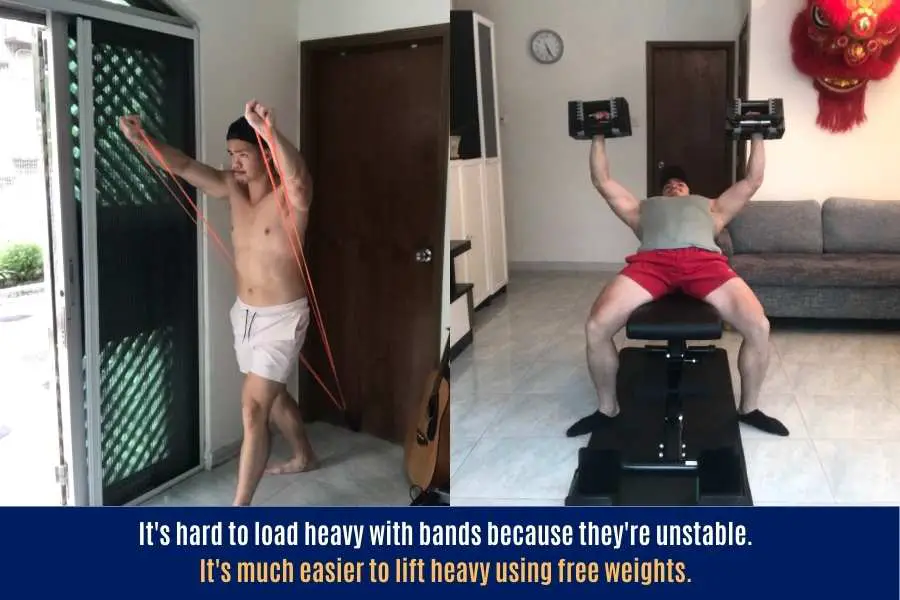
Lifting heavy loads is key for building muscle and strength (and for burning calories to some degree). But practically speaking, it’s generally more difficult to lift heavy resistance bands than it is to lift heavy free weights.
Why?
Resistance bands are inherently unstable. The band tries to snap back in all directions as you stretch it. This means a degree of core strength is usually required to lift heavy bands. That’s something most beginners don’t have.
Take-home message- resistance bands are at a natural disadvantage compared to free weights for optimal muscle gains.
2) Hard To Quantify Band Weight

Weight quantification refers to how you measure the weight you’re lifting. Quantifying free weights is easy since the weight is clearly defined. You know precisely what you’re lifting with a 15lb dumbbell or a 100lb barbell, for example.
However, you never truly know how much weight you’re lifting for two reasons. Firstly, each band is crudely categorized (even the ones labeled with poundages are not 100% accurate). Secondly, the amount of weight generated is proportional to how much the band stretches.
This can interfere with progressive overload (the practice of increasing weight over time to promote muscle growth) since overloading usually requires small but regular weight additions with each workout.
Therefore it can be very difficult to know exactly how much weight you’re lifting with bands
Take-home message- weights are generally much better than bands for a smooth overload program to build muscle fast.
3) Unclear Progression Leads To Motivation Issues

Since it’s difficult to tell precisely what weight you’re lifting with bands, it’s also difficult to see improvements over time. In comparison, it’s very easy to see improvement with free weights; you’re curling a 15lb dumbbell this week and a 20lb dumbbell the next week.
As indicated by this 2013 study, a lack of measurable improvement is a BIG motivation killer when it comes to following your program on a consistent basis. And this can take a direct hit on the likelihood of you achieving your goals (whether it be losing fat, building muscle, or both).
This is something I experienced when switching from weights to bands. I didn’t get the same enthusiasm for each workout because I couldn’t clearly see my numbers increase as I could with weights (piling plates onto a barbell week in and week out can be strangely addictive). As a result, workouts became a chore rather than something I looked forward to.
Take-home message- you may struggle to stick with a band program in the long term due to a lack of a clear progression path.
4) Bands Can Be Dangerous With Improper Use

Resistance bands may be relatively safe compared to a fully loaded barbell. But that doesn’t mean they are 100% injury-proof. In fact, it’s quite the opposite; they can be dangerous when used incorrectly.
Remember how painful it used to be to have an elastic band snap back onto your hand? Well, magnify that by 100x…
Resistance bands are under tremendous tension during use. And it can violently snap back on you (violently) if they’re not properly anchored. Additionally, old bands can snap along the middle if you overstretch them
Take-home message- make sure a band is firmly secured and in good condition to prevent snapback.
5) They Can Be Uncomfortable To Hold
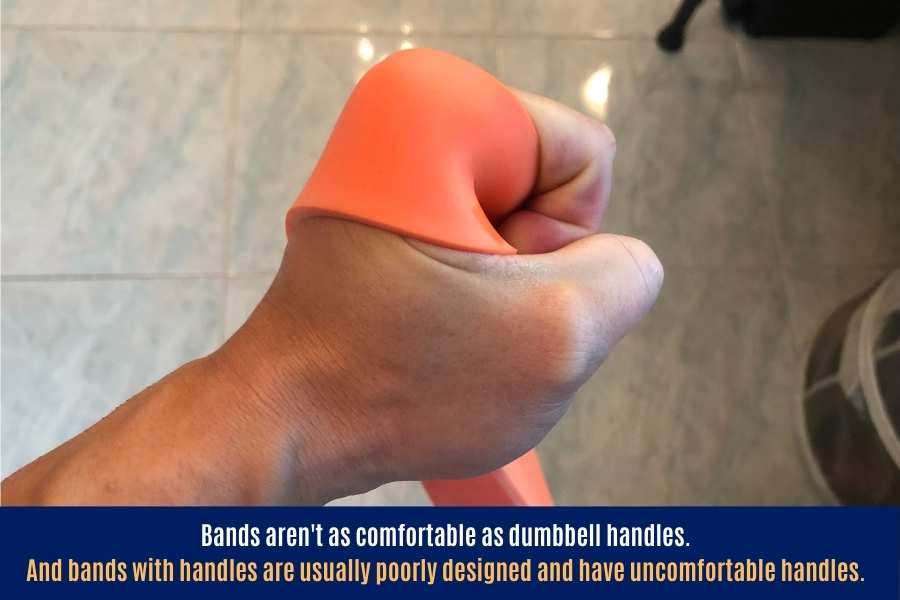
Dumbbells, barbells, and kettlebells all have handles. And those handles may even be designed with comfy grips and sleeves. One of the main disadvantages of resistance bands is the lack of a proper handle/grip.
Most loop bands are held directly onto bare rubber. This can cause uncomfortable friction burns if you aren’t using gloves. Some manufacturers (mainly tube bands) add plastic handles to their bands. But speaking from experience, these are poorly designed, flimsy, and uncomfortable to use.
Either way, you’re left with a product that’s hard to hold and grip. Consequently, this reduces the weight you can lift with bands and decreases the effectiveness of your workout.
Take-home message- band grips aren’t optimal compared to free weights and weight machines.
6. Cheap Resistance Bands Often Have Low Durability

Speaking from experience, it doesn’t matter if you go for the cheapest brand or the most premium one; all resistance bands will break when used long enough. It’s just an unfortunate drawback of resistance bands being the cheapest way to work out.
Now, a premium set will last much longer than a budget set. To give you a better idea: my Undersun loop bands (premium) have lasted 2 years and still show no signs of wear, compared to 2 sets of Whatafit tube bands (budget) which both snapped within 6 months.
Take-home message- resistance bands will invariably break at some point. But premium models last much longer than budget ones.
7) Decreased Versatility Compared To Free Weights

Recommended Resistance Bands
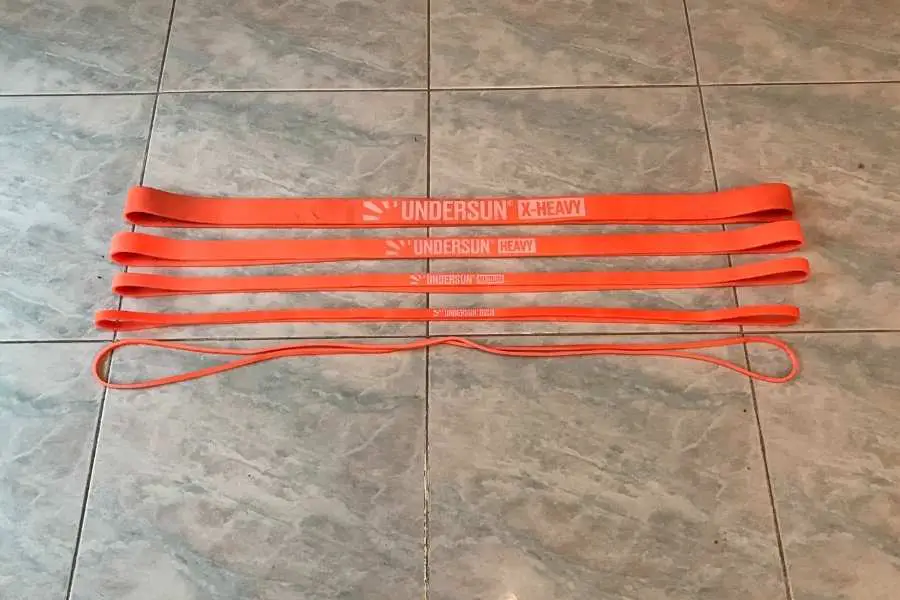
I use and recommend the Undersun bands.
Having tried half a dozen brands before (cheap and premium), these are by far the best in my opinion. The combined tension from all of the bands in this 5-pack set is enough for even the strongest of lifters. They’re also one of the most durable sets I’ve used. And they only cost ~20 bucks more than their budget competitors.
You can check out my other post for a complete hands-on test of the Undersun loop bands.
Conclusion
I’ve shared the main benefits and drawbacks of resistance band workouts, based on personal experience.
Taking everything into consideration, the typical experienced intermediate-advanced lifter will usually find weights to be much more versatile in terms of training progression, motivation, and results.
However, bands provide a cheap, convenient, and effective way for beginners to start training. Experienced lifters can also incorporate bands into their program for novel stimuli.
You may also be interested in the downloadable Kalibre Blueprint PDF which details exactly how I gained 40lbs of lean muscle (it’s 100% free!). It details the exact exercises and nutrition (with printables) I used to go from skinny to ripped!


